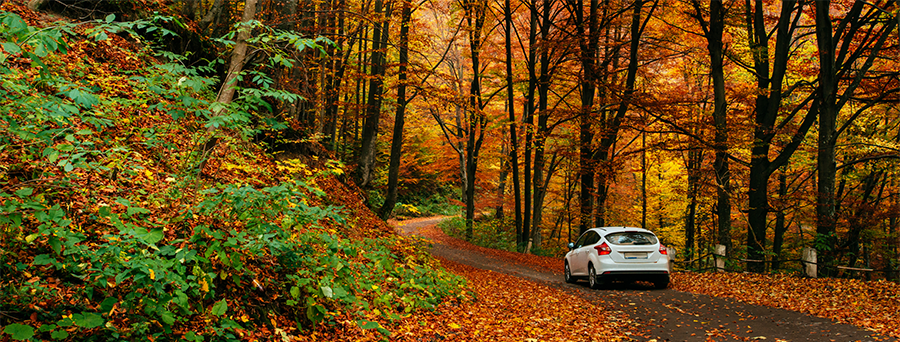Watch out for these autumn road hazards
Whether it’s wildlife or children darting across the road unexpectedly or the onslaught of cold and rainy weather, autumn presents extraordinarily high road hazards for your drivers. Here are some tips to pass along to your insurance clients and their employees who drive on-the-job, and to keep in mind for yourself as well.
Wildlife crossing the road
September – November are high animal collision months, presenting greater road hazards for tribal drivers. In fact, you’re 3.5 times more likely to hit an animal — especially a deer — in November than in any other month, cautions the Insurance Institute for Highway Safety.
Some 36 percent of auto claims resulting from a wildlife collision occur during autumn, primarily due to animal migration patterns. More specifically, deer are likely to be mating in November; that’s why you see more of them. Some 10,000 drivers strike wild animals every year; 89 percent of them occur on two-lane rural roads.
Because wildlife is most active at dawn and dusk, have your drivers avoid the roads during these times if possible, keeping to broad daylight hours. Keep to the middle lane when possible, because you’ll have more time to spot animals as they attempt to cross.
Remind drivers that hitting a large animal such as deer can be just as dangerous as colliding with another vehicle. If an animal collision occurs, pull over and call local law enforcement, who will explain what you need to do next. Some states have special requirements regarding animal collisions. Don’t forget to take photos to provide your claims adjuster.
Related: How your business can combat the rising cost of vehicle crashes
Kids back to school
Often kids are as bad as animals for not checking the road before they try to cross, creating additional road hazards for drivers. Encourage your drivers to avoid school zones and be hyper-vigilant just before and after school hours. Remind drivers that it’s illegal to pass a bus that’s loading or unloading kids on an undivided road.
And don’t forget about student drivers. According to the National Safety Council, teen crashes spike in the fall when kids head back to school, particularly just before and after school hours.
Shorter days and worsening weather
Dusk, dawn and darkness happen more often during the fall and winter, making it harder for drivers to see. While just 25 percent of our driving is at night, 50 percent of traffic deaths occur then, says the National Safety Council. They also say that often a 50-year-old driver needs twice as much light to see as well as a 30-year-old.
Rainy days also impact visibility, as does a fogged windshield on a cold, wet day. To combat these road hazards, encourage drivers not to start their trip until their visibility is clear in the windshield, windows and mirrors. Also encourage them to slow down on rain-slick roads, particularly if it’s the first rain in awhile.
Probably because it’s the start of the winter season, but 34 percent of skidding and snow claims happen between October and December. Make sure vehicles have plenty of tread left on their tires, and that tires are properly inflated. Check the batter, windshield wipers, wiper fluid and anti-freeze levels, and keep gas tanks at least half full.
Related: Checklist for hiring safe drivers
Holiday shopping
As the holidays approach, shoppers converge on malls and shops, short on time and patience. Farmers Insurance, as quoted by PropertyCasualty360, has found that 25 percent of parking lot claims happen between October – December. They recommend:
- Park further away from cars. Tight spaces can increase the chances of being hit by a car door or another vehicle.
- Park in well-lit areas and be aware of who is nearby when walking to a vehicle or pulling out of a parking space.
- Don’t park near cart returns. It reduces the chances of an errant cart drifting into your vehicle.
Related: Should you have an employee mobile phone policy?
Auto thefts
‘Tis the season for auto thefts as well, as autumn turns into winter. It goes without saying, but we’ll repeat it anyway: Don’t leave doors unlocked. Don’t leave packages, electronics or briefcases visible on the seats. In fact, don’t leave anything of value in the car – even in the trunk.
Provide these autumn driving tips to your employees or insureds to keep them safe while on the job – and on their own personal time as well.
Resources
A look at fall’s most common road hazards, region by region
8 insurance claims that increase in the fall
Fall Driving Safety Tips
10 school zone driving safety tips for back-to-school season
This article originally appeared on Arrowhead Tribal blogpost. It has been updated and modified to better fit the needs of ACM’s clients.

